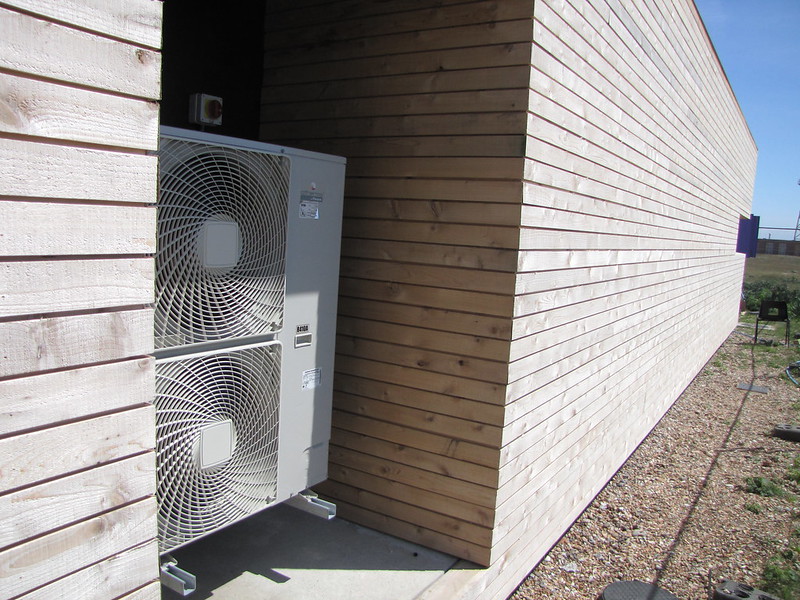The cost of an air-to-water heat pump system can vary significantly based on several factors, including the size of the system, the efficiency of the unit, the complexity of the installation, and the brand of the heat pump. On average, the cost of a heat pump system can range from $4,200 to $10,000 or more, with additional costs for labor, permits, and upgrades to the electrical system and heating and cooling system.
Understanding the Factors that Influence Air to Water Heat Pump Costs
System Size
The size of the heat pump system is a crucial factor in determining the cost. Larger systems, measured in BTUs (British Thermal Units), will generally cost more than smaller systems. For example, an 18,000-BTU system (about 1.5 tons) can cost between $1,500 and $3,900, while a 60,000-BTU system (about 5 tons) can cost between $3,900 and $7,800.
Efficiency Ratings
The efficiency of the heat pump, as measured by its SEER (Seasonal Energy Efficiency Ratio) and HSPF (Heating Seasonal Performance Factor) ratings, can also impact the cost. Heat pumps with higher efficiency ratings, such as a SEER of 16 or higher, can cost more upfront but can save homeowners money in the long run through lower energy bills.
Brand and Model
The brand and model of the heat pump can also affect the cost. Top brands like Trane, Carrier, American Standard, Rheem, Bryant, and Goodman can vary in price, with some brands costing more than others. For example, Goodman heat pumps can cost between $1,500 and $3,900, while Bryant heat pumps can cost between $1,600 and $2,700.
Installation Complexity
The complexity of the installation can also impact the cost. Factors such as the need for electrical upgrades, ductwork modifications, or the installation of additional components like manifolds or pex piping can increase the labor costs. On average, labor costs for installing a heat pump can range from $75 to $125 per hour, depending on the complexity of the job.
Preparing for a DIY Air to Water Heat Pump Installation
For DIY users with advanced hands-on skills, the cost of installing an air-to-water heat pump system can be reduced by doing some of the work themselves. However, it’s important to have a good understanding of the system and any necessary permits or codes before attempting a DIY installation.
Necessary Tools and Equipment
To install an air-to-water heat pump system, you’ll need the following tools and equipment:
– Manifold installation tools (wrenches, pipe cutter, etc.)
– Pex tubing and fittings
– Electrical tools (wire strippers, crimpers, multimeter, etc.)
– Insulation materials
– Refrigeration tools (vacuum pump, manifold gauge set, etc.)
Permits and Inspections
Before starting the installation, it’s crucial to check with your local authorities to determine if any permits or inspections are required. Failure to obtain the necessary permits can result in fines or even the need to remove the installed system.
Electrical Upgrades
Depending on the size and power requirements of the heat pump system, you may need to upgrade your home’s electrical system. This can include installing a new circuit breaker, upgrading the electrical panel, or running additional wiring to the heat pump location.
Ductwork Modifications
If your home’s existing heating and cooling system uses ductwork, you may need to modify the ductwork to accommodate the new heat pump system. This can involve adding or rerouting ductwork to ensure proper airflow and distribution.
Manifold and Pex Piping Installation
One of the key DIY tasks for an air-to-water heat pump system is the installation of the manifolds and pex piping. This involves carefully measuring, cutting, and connecting the pex tubing to the manifolds, ensuring proper flow and insulation.
Refrigerant Charging and System Commissioning
The final step in a DIY air-to-water heat pump installation is the refrigerant charging and system commissioning. This requires specialized knowledge and tools, such as a vacuum pump and manifold gauge set, to properly charge the system and ensure it is functioning correctly.
Conclusion
The cost of an air-to-water heat pump system can vary significantly, but with the right knowledge and hands-on skills, DIY users can potentially save a significant amount of money on the installation. By understanding the factors that influence the cost, preparing the necessary tools and equipment, and following the proper installation procedures, you can successfully install an air-to-water heat pump system in your home.

